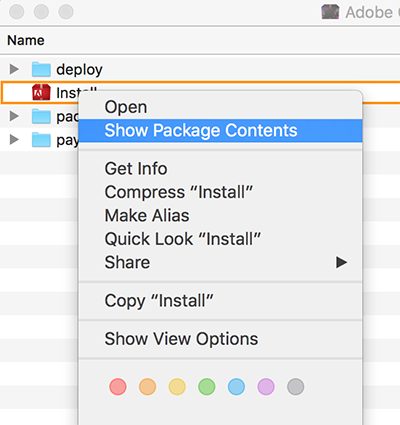Pathfinder For Mac Wont Start After Update To High Sierra
By • 4:00 am, July 23, 2010 • • Clues to the causes of Mac startup problems can be found by analyzing when in the boot process the system fails. Problems may be related to the power supply, battery, hard drive, logic board, OS corruption or an issue with a user account. Macs are reliable machines, but like many of us they get cranky from time to time. Isolating where the problem is occurring is key to finding the solution. Unplug any external peripherals (disk drives, printer, etc.) to help narrow down the cause. This post is sponsored by MacPaw, maker of CleanMyMac. The following questions are helpful to narrow down the cause of your Mac’s lethargy: Does the system turn on?
If your Mac won’t power on at all, likely suspects are a failed power supply, a bad logic board, a blown fuse (on desktops), a dead battery or a bad AC adapter (on portables). Failed power supplies are sometimes accompanied by a popping sound. That’s usually a capacitor which has given up the ghost and burst open. IMac G5 systems frequently suffer from bad power supplies.
Sims 1 makin magic no cd crack. DEVIANCE no CD The Sims: Makin ' Magic v1.0 ENG. Skip to navigation Skip to main content. The Sims Makin Magic Crack no-CD: สำหรับคนที่กำลังเล่นเกมส์ The sims ภาคใหม่อยู่และกำลังประสบปัญหา สำหรับท่านที่ไม่ต้องการให้แผ่นเสีย หรือกลัว. Sims: makin' magic v1.9 [english] no-cd/fixed exe (1.09mb) Search for related No-CD & No-DVD Patch No-CD & No-DVD Patch troubleshooting: The most common problem getting a No-CD/No-DVD patch to work is ensuring that the No-CD/No-DVD patch matches you're game version, because the games exe is changed when a patch update is applied previous.
Learn how to fix Mac won't Restart After High Sierra update, iMac, MacBook Pro won't boot, Mac won't boot in safe mode, mac won't start in safe mode, Category Howto & Style. If your Mac computer won't start/boot after updating to High Sierra, you can try to reset NVRAM and PRAM to fix the unbootable Mac. Restart your Mac and simultaneously press 'Command+Option+P+R' keys. Check if your Mac can successfully boot into macOS High Sierra after update. Fix 3: Use Disk Utility in Recovery Mode.
Supplies can fail fully or partially – they may give some power to the fans and such but still not work properly. Fortunately a power supply or AC adapter is relatively inexpensive to replace. Laptops have an additional power supply in the battery.

A dead or defective battery can prevent your MacBook or PowerBook from booting, or the battery may keep your system running after a crash, unable to reboot. For laptops that have removable batteries (a dying Apple breed) remove the battery and unplug the computer when troubleshooting. Macs also have another battery, called the PRAM (or NV-RAM) battery, that saves things like network settings, choice of startup drive, etc. If the date and time reset each time you unplug the Mac you need a new PRAM battery. A dead or dying PRAM battery can prevent a Mac from booting or cause erratic behavior. Sometimes plugging in the computer and letting it sit for 30-60 minutes recharges the battery enough to permit booting.
Does it make any noise? Listening to your computer may seem a bit metaphysical, but can provide helpful clues to startup problems. If your Mac doesn’t make any noise at all when switching it on, or if you hear the fans running but nothing else, you may again have a power supply or logic board failure.
Sometimes a Mac will power on but the hard drive will squeal, whine very loudly or make ticking sounds. This can indicate a failed or failing hard drive. Sometimes switching on/off a few times can help, but don’t push things under these circumstances. Leaving a failing drive struggling too long can cause further damage If you have a very old Mac with a non-spinning hard drive, more drastic measures may be required.
Some people have had success a to fix this problem, but I haven’t tried this method myself. If you have to resort to these types of tricks to get your disk working, copy any important data off a disk immediately when it’s accessible to be safe.

A groaning or buzzing sound that revs up and down at low RPM (and sounds like a wounded animal) could be a fan undergoing a slow death. These components are inexpensive to replace. Mac startup tones and blinking lights The Mac’s distinctive is more than an aural brand, it indicates a successful hardware (POST) test. If you don’t hear the chime but instead hear a single tone, a series of tones, or see blinking lights, your Mac is indicating a hardware problem.
This may be the logic board, bad RAM, the power manager, a video card, etc. Bad RAM can be a common culprit – on newer Macs, a blinking sequence of lights at startup can indicate this condition. Fortunately this is easy to test for: shut down the computer, remove one RAM DIMM at a time (remove in pairs on the Mac Pro or PowerMac G5), then reboot. Repeat for each DIMM in succession until you find the culprit. See your Mac Owner’s Manual (or Google for instructions) on to remove and install RAM. If RAM isn’t the issue, check the for information.